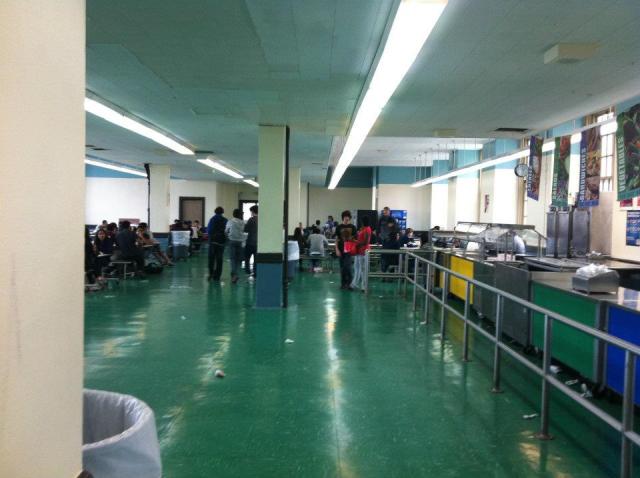
The federal SEOG grants financial aid to college students in greatest financial need. Applicants must show financial need and a commitment to pursue a degree in a specific field of study. These guidelines are quite simple. Below is an overview of the application process, eligibility requirements, and limitations. Make sure to read the entire article before applying. You'll be one step closer to your first grant after you've finished reading it!
Application process
A scholarship called an SEOG grant can be used to help students pay college expenses. The federal government approves grants for students if you are either a U.S. citizen, or a citizen of another nation. If you are a male you will need a Social Security number. You must also be enrolled full or part-time at an accredited university and possess a valid GED Certificate. You can apply for the SEOG program if you are a student at an accredited college.
FSEOG Opportunity Grants are awarded on the basis of individual financial need and can provide additional $100-$4,000 per year of study. Each year's award amount is subject to change so be sure to read through the guidelines before applying. To be eligible for a greater award amount, you will need to report any changes in your financial status to the school. If your income is greater than that of your parents, you should update your FAFSA.

Eligibility requirements
Federal Student Aid Office has established certain requirements for FSEOG. First, you must have a bachelor's degree or more and be a U.S. citizen. Additionally, you must have a minimum GPA of 2.0. If you are a student who has defaulted on any of their student loans, you will not be eligible for the FSEOG. Pell Grants may be available for you.
FSEOG eligibility rules are as strict as any grant. People who have defaulted or failed to repay federal or guaranteed student loan may be disqualified. However, if you have a valid reason to apply for a FSEOG, the school may consider your application. It might request a written waiver from the U.S. Department of Education. This document will serve as proof of your financial need.
Pell-eligible student can apply
Students who complete postsecondary education are more productive and employable. Pell for Success helps institutions make it easier for low-income student to pursue higher-paying jobs. Pell grants are a way to increase the number and quality of STEM-related students, as well as create career centers and alumni networks. Schools are given a clear purpose to increase quality education and prepare students to work. Some schools offer vocational programs to Pell students, while others partner with local businesses to provide instruction that is tailored to the needs of their employees.
Federal Pell Grants will be paid to eligible institutions if they are approved by the federal government. These funds have limits and students must be granted funds based on their financial need. Pell Grants are prorated based on how many credits a student enrolls in during the award year. The amount of funds available to students will depend on their ability to pay for school.

Limitations
While a student can receive up to $4,400 from an FSEOG grant, there are limits to the amount that an institution may award. The federal share of an award cannot exceed 75 percent. If students are studying abroad, they can request a higher Federal portion. These requests must be submitted as part the regular FSEOG funding applications. A Federal increase may be available for students applying through charitable foundations.
FAQ
What is the purpose and function of education?
Education should prepare students for work. It is not only an academic pursuit, but also a social activity in which children can learn from each other and gain confidence through participating in sports, music, or art. Education is about teaching students to think critically and create in order to be independent and self-reliant. What does it mean to have good educational standards?
Good educational standards are those which ensure that all pupils achieve their potential. They establish clear goals for teachers to work towards with their students. Educational standards should be flexible enough that schools can meet changing needs. They must also be fair and equitable so that every child has the chance to succeed regardless of their background.
What are the types of early child education?
There are many ways to explain early childhood education. These are the most popular:
-
Preschool - Children ages 2 to 5
-
PreKindergarten – Children aged 4-6
-
Head Start/Hestart - Children aged 0-3
-
Day Care/ Daycares: Children 0-5
-
Child Care Centers: Children from 0-18
-
Family Child Care for Children Ages 0-12
-
Homeschooling for children ages KG-16
What is a vocational college?
Vocational school programs are designed to prepare individuals for specific jobs. They can also offer training in specific skills and general education.
Vocational education is an essential part of our society as it helps young people acquire the skills necessary to succeed in their lives. It provides high-quality learning opportunities for all students.
Vocational schools offer a variety of options for students, such as apprenticeships, certificates and diplomas, degrees, college transfers programs, and other postsecondary credentials. Vocational schools offer both academic and practical courses in math, science and English.
What are some ways you can get scholarships?
To help pay college expenses, scholarships are grants. There are many types and types of scholarships. These scholarships include:
-
Federal Grants
-
State Grants
-
Student Loans
-
Work Study Programmes
-
Financial Aid
Federal grants come directly from the U.S. government. Federal grants are subject to certain conditions. You will need to prove financial need.
Individual states can offer grants to state governments. State grants can be offered by each state based upon financial need, while others are given for specific purposes.
Banks and other lending agencies can provide student loans. Students borrow money to pay tuition and other living expenses.
Work-study programs encourage employers to hire qualified student workers. Employers are required to pay employees at least minimum wage.
Financial aid is available to help low-income families pay for college. It covers all or most of the tuition costs.
Statistics
- Think of the rhetorical power of nineteenth-century abolitionist Harriet Beecher Stowe, Martin Luther King, Jr., or Occupy Wall Street activists with their rallying cry of “we are the 99 percent.” (bostonreview.net)
- And, within ten years of graduation, 44.1 percent of 1993 humanities graduates had written to public officials, compared to 30.1 percent of STEM majors. (bostonreview.net)
- Among STEM majors, that number is 83.5 percent. (bostonreview.net)
- They are also 25% more likely to graduate from high school and have higher math and reading scores, with fewer behavioral problems,” according to research at the University of Tennessee. (habitatbroward.org)
- They are more likely to graduate high school (25%) and finish college (116%). (habitatbroward.org)
External Links
How To
What is vocational training?
Vocational Education, which is an educational system that prepares high school students for jobs after college or high school, provides them with training in specific skills required for a job (e.g. welding). This includes apprenticeship programs and on-thejob training. Vocational education differs from general education because it focuses on preparing individuals for specific careers rather than learning broad knowledge for future use. Vocational education's goal is to help students find employment after they graduate.
Vocational education is available at all levels of education, including primary, secondary, high school, college, universities, technical institutes as well as trade schools, community colleges and junior colleges. There are also many specialty schools like nursing schools and law schools, legal schools, medical schools and dental schools as well as veterinary medicine, veterinary medicine, firefighting, police academies and military academies. Many of these schools offer both academic instruction and practical experiences.
A number of countries have made significant investments in vocational education over recent decades; for example, Australia, Denmark, Finland, Germany, Ireland, Japan, Luxembourg, New Zealand, Norway, Poland, Sweden, Switzerland, the United Kingdom, and the United States. However, the effectiveness of vocational education remains controversial. Some critics argue that it does little to improve students' employability; others argue that it provides useful preparation for life after school.
The U.S. Bureau of Labor Statistics has estimated that 47% of American adults hold a postsecondary certificate or degree related to their current occupation. This figure is higher for those with more education. 71% (25-29) of Americans have a bachelor's level or higher and work in fields that require a postsecondary degree.
According to the BLS, nearly half of America's adult population held at least one postsecondary credential in 2012. A third of Americans have a two-year associate's degree and 10% hold a four year bachelor's degree. One in five Americans holds a master’s degree or doctorate.
The median annual wage of a bachelor's degree holder was $50,900 in 2013, compared with $23,800 for someone without one. For those with advanced degrees, the median wage was $81,300.
For those who did not complete high school, the median wage was only $15,200. Those with less than a high school diploma earned $13,000 per year.